Oven Roasted Garlic Confit Recipe
Oven roasted garlic confit is pure garlic bliss. The hardest part of the recipe is peeling your garlic. Sit back and let the oven coax the deep, mellow savoriness out of your cloves and get ready to have your mind blown.
Cooking is all about being prepared. Sure, you can watch cooking shows that claim to have a meal on the table in 30 minutes, but that doesn’t include the prep time. If I had someone in my kitchen doing all of the behind the scenes work, I could make dinner faster, too. The way to get around not having a team of interns there to prep for you is to prep for yourself in ways that last the week and create depth.
Garlic confit is one of those ways.
Why You’ll Love this Recipe
- Customizable with herbs such as rosemary and thyme
- Hands off and easy to cook
- Having garlic confit on hand creates depth in meals with little forethought
What You’ll Walk Away Knowing
- Concerns about botulism and safety tips
- How to store to avoid botulism multiplication
Ingredient List
Garlic Cloves: After peeling the cloves, cut off the root end.
Avocado Oil: I prefer a neutral oil. You can use olive oil instead if you prefer the flavor.
Optional: You can put in 2 sprigs each of rosemary and thyme for an herbal undertone.
Step-by-Step Instructions
- Preheat oven to 275°F
- Put the garlic cloves in a heat safe dish
- Stir avocado oil and salt together
- Pour the oil on top of the garlic cloves, making sure they’re submerged
- Bake for 1½-2 hours
- Remove from the oven and let cool before storing in an airtight container in the refrigerator
Alternative Cooking Methods
You can also confit garlic on the stove at a low heat for 1½ -2 hours. Heat the oil to 200°F. I find this to be harder to control and more finicky so I prefer the oven.
Sous vide garlic confit is another method. Set your immersion circulator to 185°F, put your garlic and oil in a mason jar with the lid on finger tight to allow any air to escape, and leave in the water bath for 3-4 hours. This is more controlled and prevents browning or burning of the garlic cloves.
Why Botulism is a Concern in Garlic Confit
Garlic confit is perfectly safe if handled and stored correctly, but deadly if it isn’t.
Garlic is a low-acid food, which means it lacks the natural acidity needed to prevent dangerous bacteria like Clostridium botulinum from growing when stored improperly.
According to the USDA and FDA, garlic in oil mixtures must be refrigerated and used within 7 days or frozen to prevent risk of botulism.
Clostridium botulinum is a bacteria that can produce a deadly toxin in low-oxygen (anaerobic), low-acid, moist, room-temperature environments. Garlic confit checks all those boxes:
- Low-acid: Garlic is naturally low in acid
- Moist: Garlic confit remains moist even after cooking, which means its water activity level is still high enough to support microbial growth, especially when submerged in oil. That’s why cooling and refrigeration are critical.
- Anaerobic: Oil creates a low-oxygen environment, which is perfect for botulism to thrive.
- Room temperature: Leaving garlic confit at room temp (or storing it unrefrigerated) is the real danger zone.
Cooking garlic doesn’t kill the botulism spores. In fact, low, slow heat like what we use for garlic confit is precisely the condition where botulism can thrive if not stored properly.
How to Prevent Botulism in Garlic Confit
- Refrigerate immediately after cooling—no countertop lingering.
- Use within 1 week or freeze in small portions (ice cube trays work great).
- Never store at room temp
How to Store Garlic Confit Safely
After cooling, garlic confit must be refrigerated to prevent the risk of botulism. The oil will firm up, but is easily scooped out with a spoon and melts quickly.
Use the garlic confit within a week or you can also freeze it in ice cube trays. I like to count out the cloves to make sure I know how many are in each when I go to use it in a recipe. 5 per cube is my go to.
Freezing stops bacterial growth but doesn’t kill botulism spores, so garlic confit should be thawed in the fridge and used promptly—never left to sit on the counter.
How to Use
I like to slather garlic confit on pieces of bread, put in mashed potatoes, and in garlic aioli. I’m sure you’ll find plenty of uses for this recipe.
FAQs
No. Never store garlic confit at room temperature. Oil traps moisture and creates an anaerobic environment that allows botulism spores to grow. Refrigeration is non-negotiable.
Yes, but use clarified butter (ghee) if you’re cooking sous vide or want to reduce water content. Regular butter has milk solids and water that can spoil faster. Always store garlic-butter confit in the fridge.
Low and slow is the goal—typically around 200°F (93°C) in the oven or 185°F (85°C) for sous vide. You want the garlic soft and golden, not browned or crispy.
No. Even pressure canning is not recommended for oil-based, low-acid foods like garlic confit. The risk of botulism is too high. Stick to refrigeration or freezing.
This is one of my favorite ways to save time and get amazing flavor in the kitchen. It’s a meal prep secret that will have every meal tasting like it took a long time to make. Let me know in the comments how you’re using your garlic confit.
Oven Roasted Garlic Confit
Ingredients
- 1 cup garlic cloves 4 bulbs
- 1 cup avocado oil
- 1/2 teaspoon salt
Instructions
- Preheat oven to 275°F
- Put the 1 cup garlic cloves in a heat safe dish
- Stir 1 cup avocado oil and 1/2 teaspoon salt together
- Pour the oil on top of the garlic cloves, making sure they’re submerged
- Bake for 1½-2 hours
- Remove from the oven and let cool before storing in an airtight container in the refrigerator
Notes
- Low-acid: Garlic is naturally low in acid
- Moist: Garlic confit remains moist even after cooking, which means its water activity level is still high enough to support microbial growth—especially when submerged in oil. That’s why cooling and refrigeration are critical.
- Anaerobic: Oil creates a low-oxygen environment, which is perfect for botulism to thrive.
- Room temperature: Leaving garlic confit at room temp (or storing it unrefrigerated) is the real danger zone.
- Refrigerate immediately after cooling—no countertop lingering.
- Use within 1 week or freeze in small portions (ice cube trays work great).
- Never store at room temp
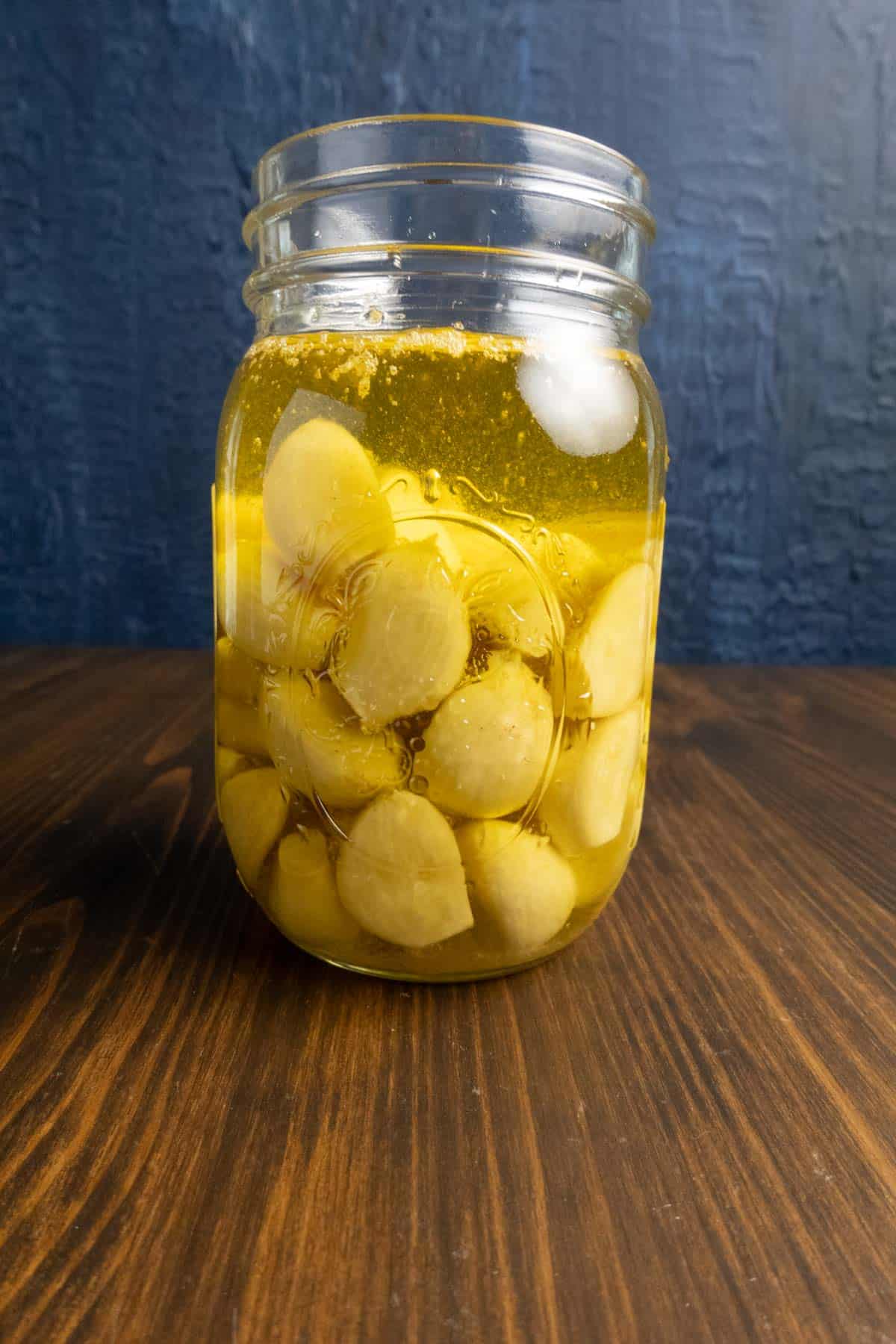
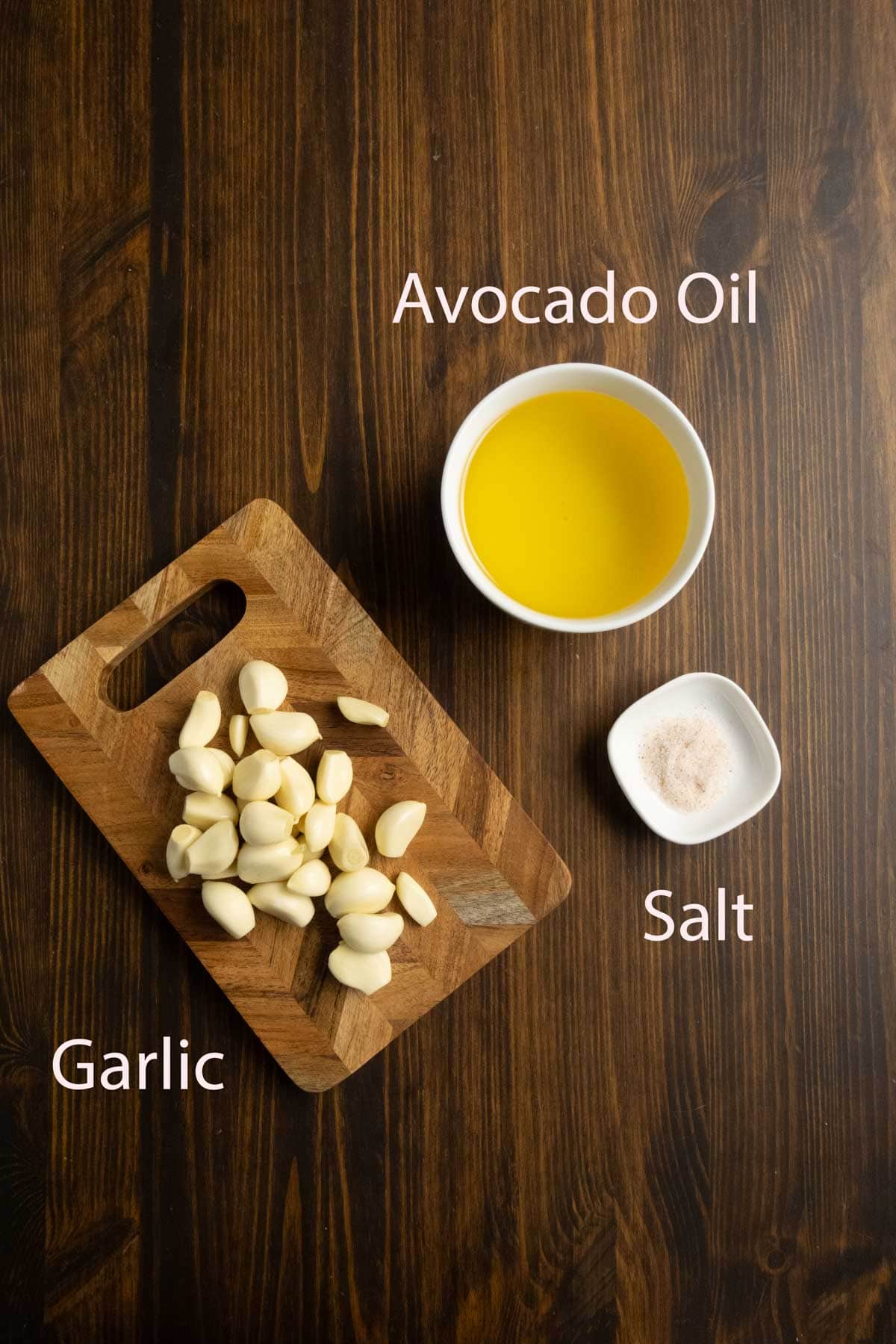
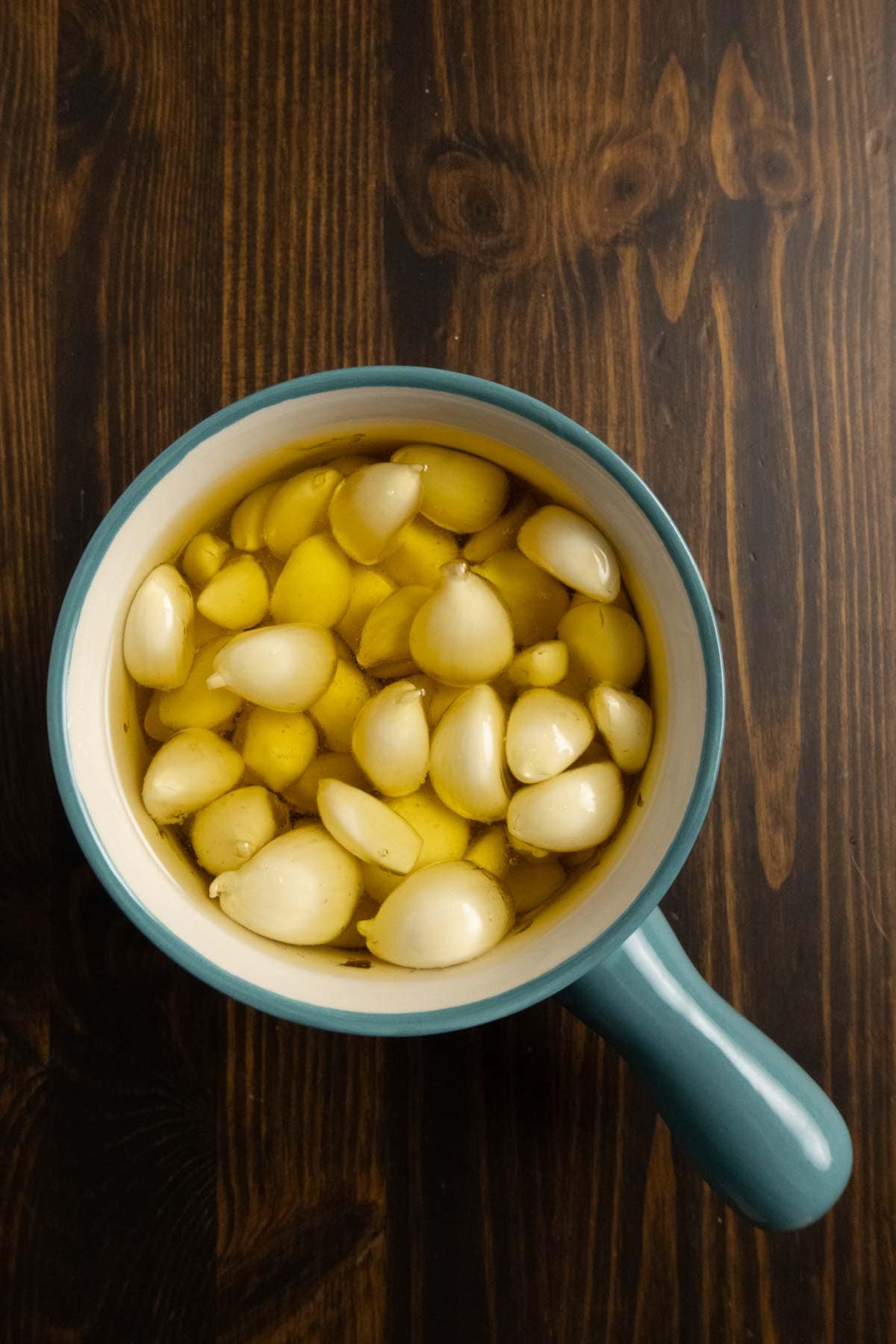


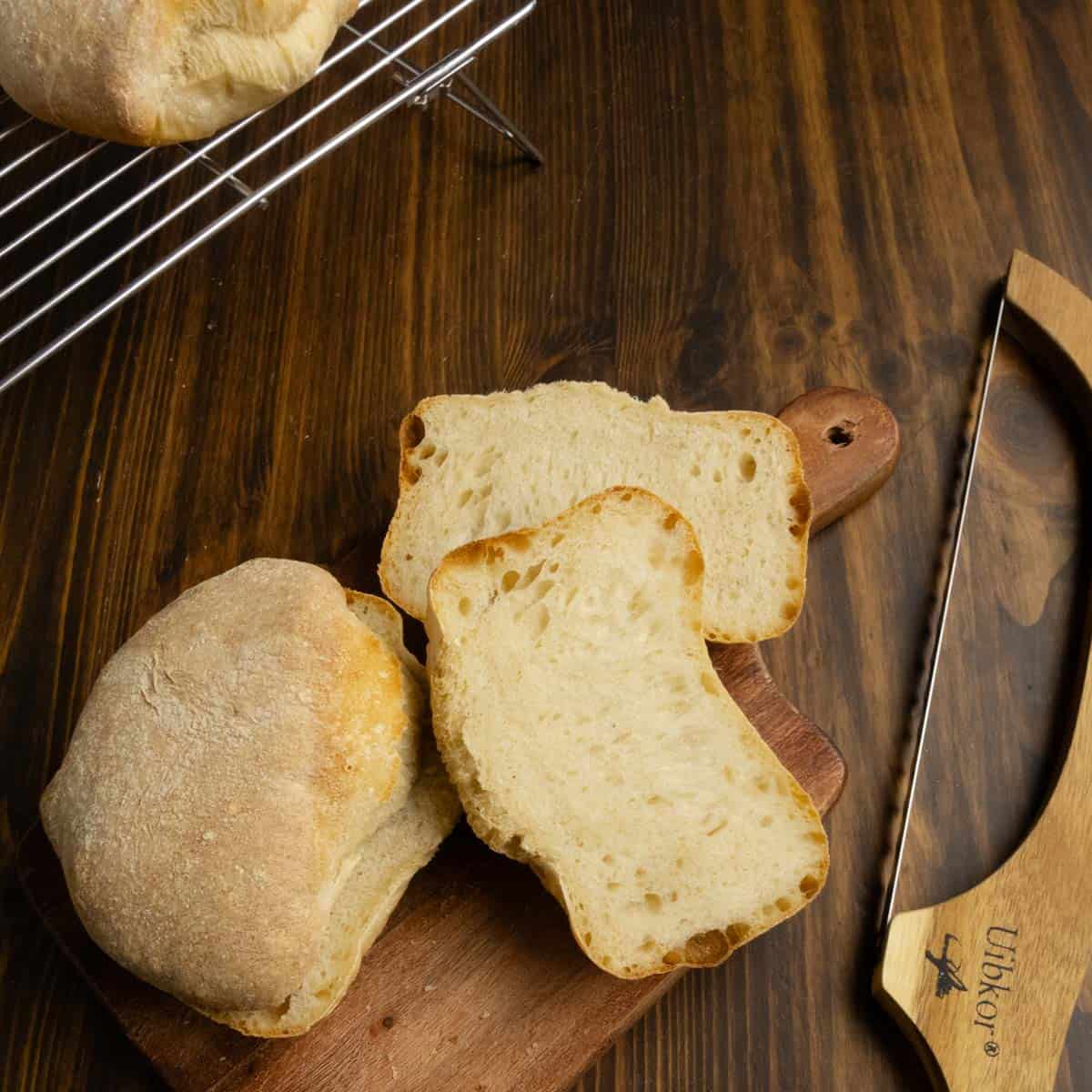
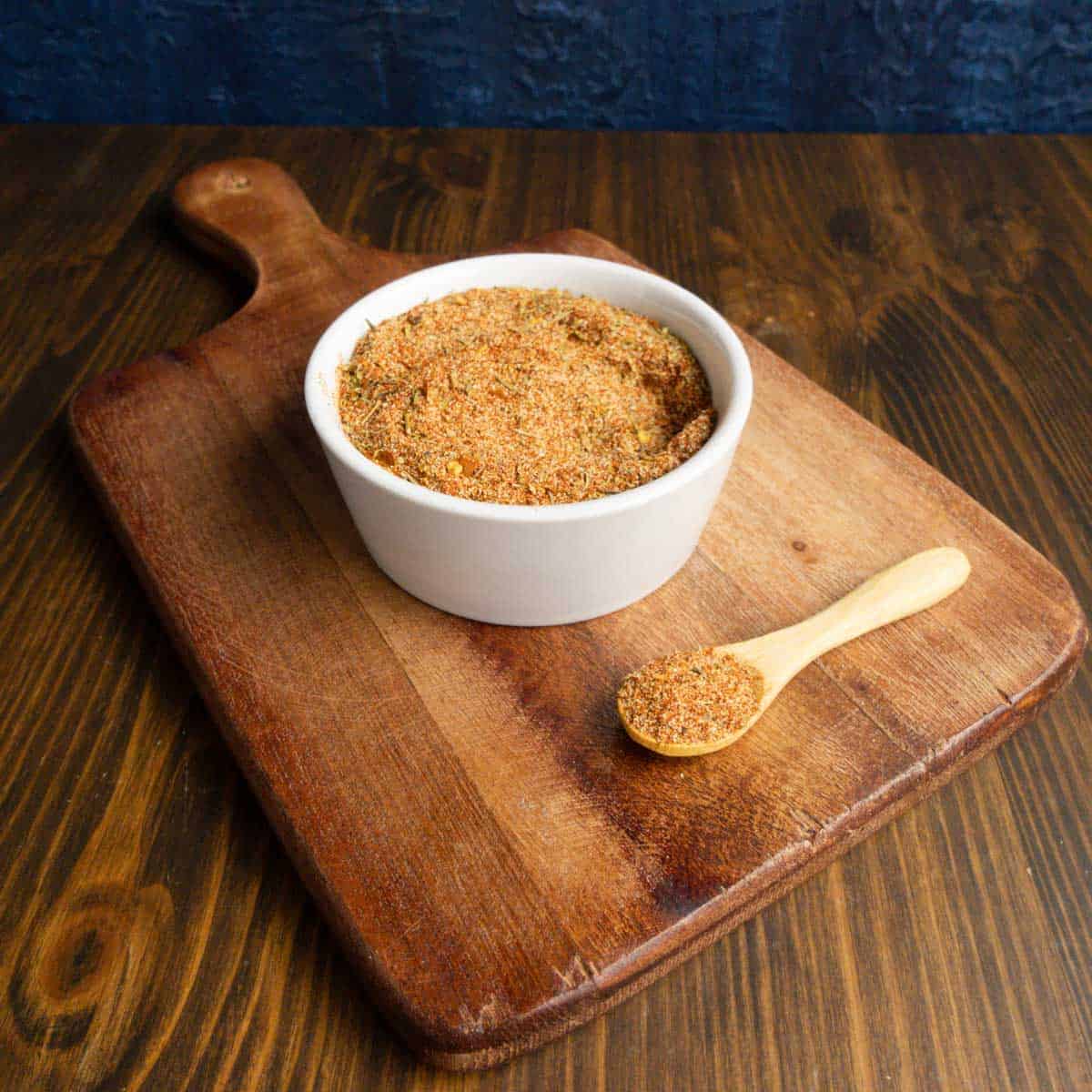
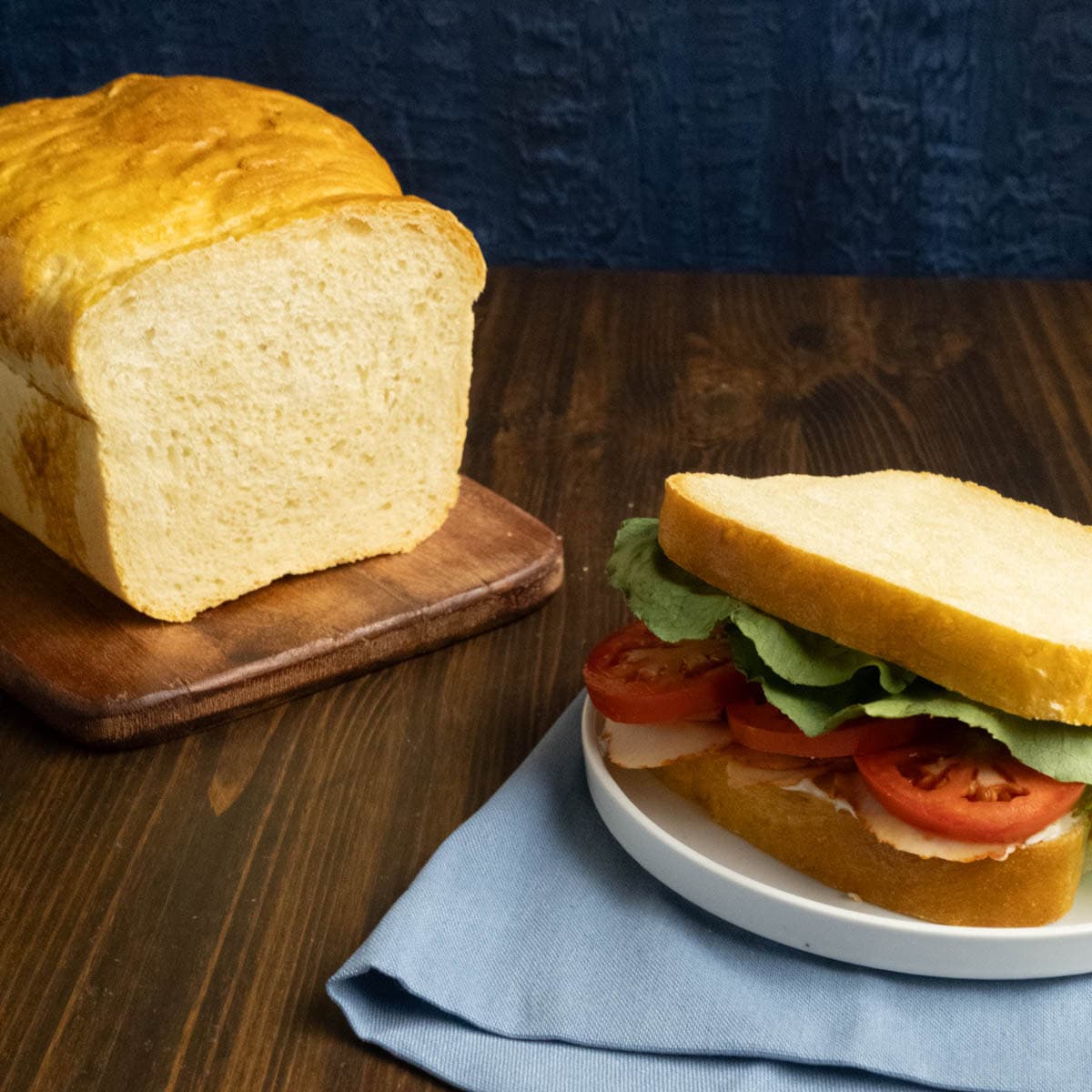
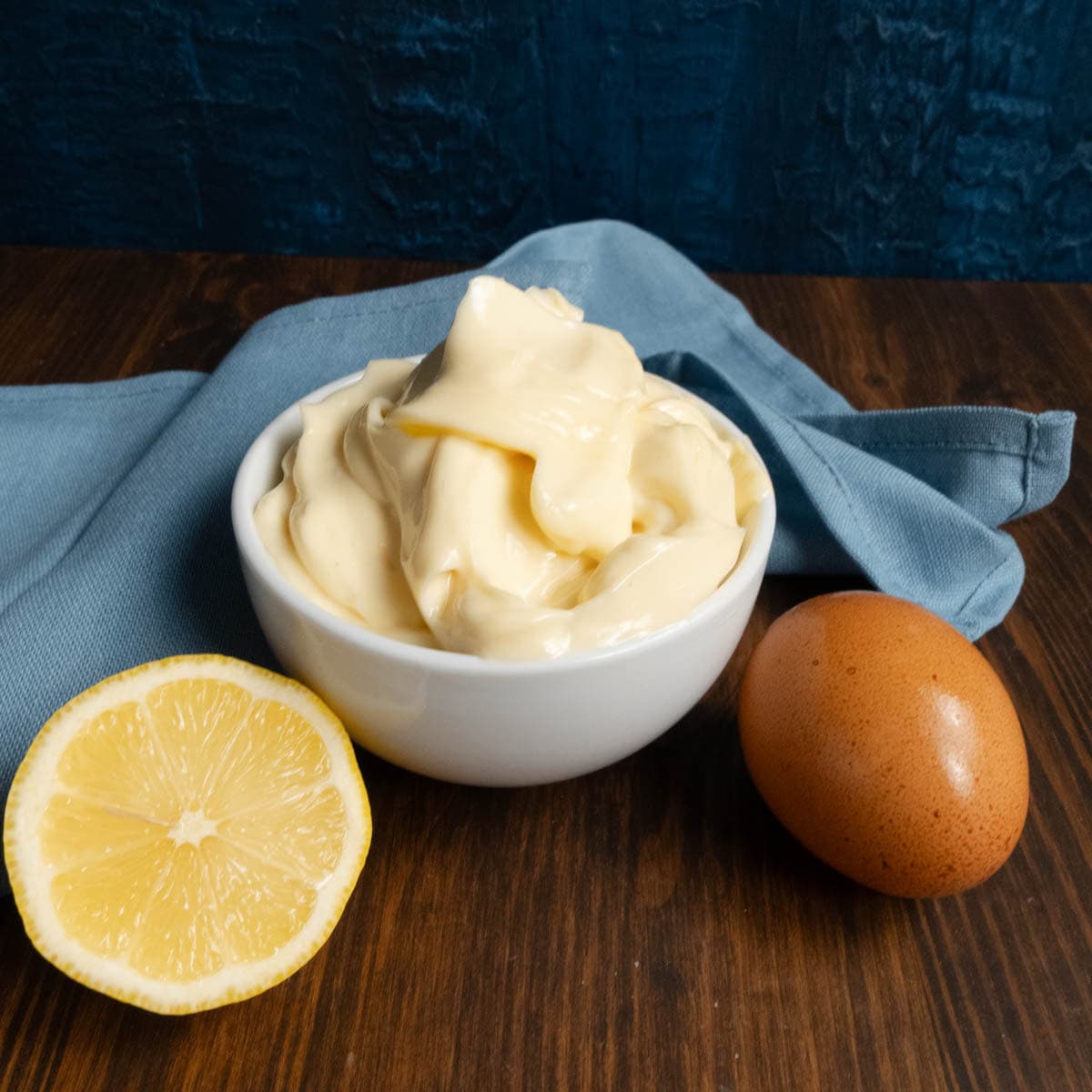
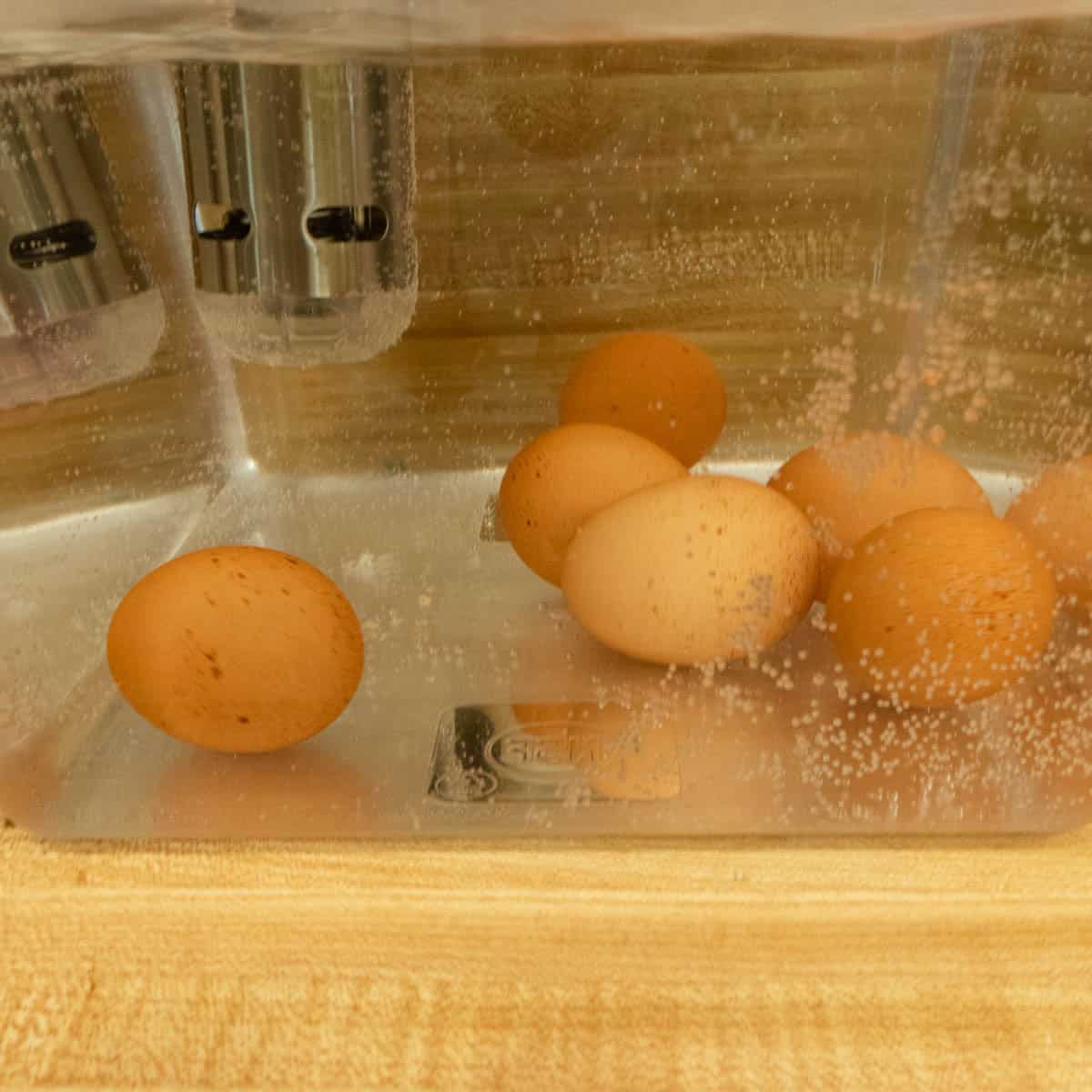
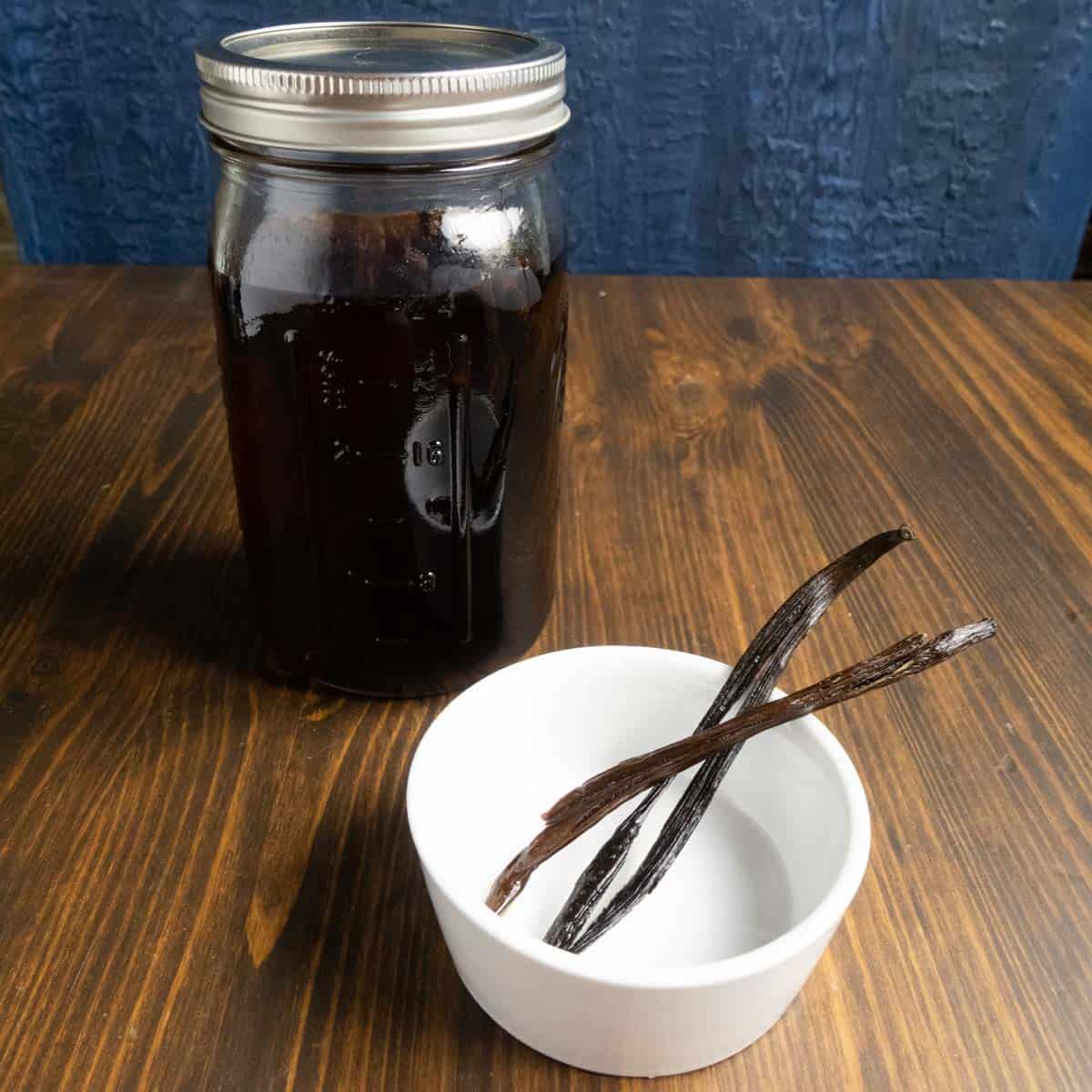
This creamy, spreadable garlic is great on anything. I can almost eat it with a spoon. Let me know what you use it in.